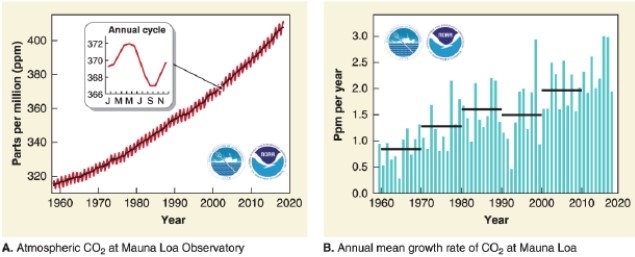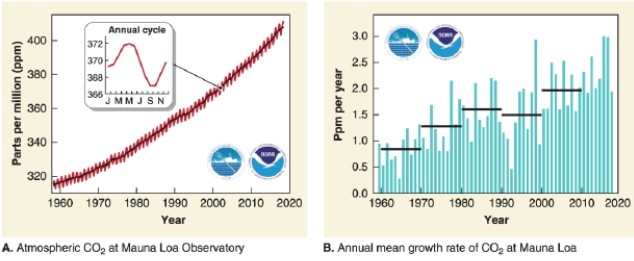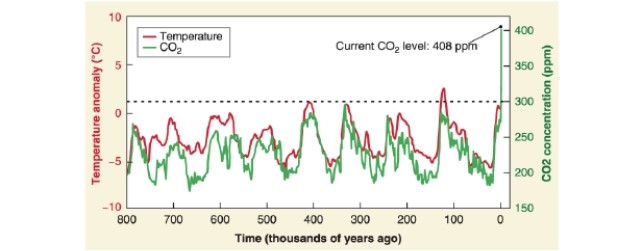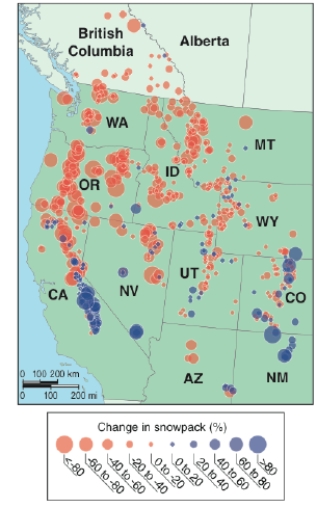Deck 7: The Changing Climate
Question
Question
Question
Question
Question
Question
Question
Question
Question
Question
Question
Question
Question
Question
Question
Question
Question
Question
Question
Question
Question
Question
Question
Question
Question
Question
Question
Question
Question
Question
Question
Question
Question
Question
Question
Question
Question
Question
Question
Question
Question
Question
Question
Question
Question
Question
Question
Question
Question
Question
Question
Question
Question
Question
Question
Question
Question
Question
Question
Question
Question
Question
Question
Question
Question
Question
Question
Question
Question
Question
Question
Question
Question
Question
Question
Question
Question
Question
Question
Question

Unlock Deck
Sign up to unlock the cards in this deck!
Unlock Deck
Unlock Deck
1/147
Play
Full screen (f)
Deck 7: The Changing Climate
1
The year 1976 was the last year global atmospheric temperatures were below average.
True
2
Scientists who study Earth's ancient climates are paleoclimatologists.
True
3
The primary reason the Greenland Norse society failed was due to the formation of summer sea ice in the North Atlantic Ocean.
True
4
The carbon cycle describes the movement of carbon atoms and carbon dioxide molecules through Earth's physical systems.

Unlock Deck
Unlock for access to all 147 flashcards in this deck.
Unlock Deck
k this deck
5
The first reliable and direct measurements of atmospheric carbon dioxide levels occurred in 1958.

Unlock Deck
Unlock for access to all 147 flashcards in this deck.
Unlock Deck
k this deck
6
The Quaternary is known for its long and gradual cooling trend.

Unlock Deck
Unlock for access to all 147 flashcards in this deck.
Unlock Deck
k this deck
7
The Holocene is known for its unusually stable and warm climate.

Unlock Deck
Unlock for access to all 147 flashcards in this deck.
Unlock Deck
k this deck
8
Mount Pinatubo in the Philippines erupted in 1991 and caused climate cooling.

Unlock Deck
Unlock for access to all 147 flashcards in this deck.
Unlock Deck
k this deck
9
The ice-albedo feedback is a positive feedback that can cause both cooling and warming trends.

Unlock Deck
Unlock for access to all 147 flashcards in this deck.
Unlock Deck
k this deck
10
Quaternary glacial and interglacial periods together cycle at about 100,000-year intervals.

Unlock Deck
Unlock for access to all 147 flashcards in this deck.
Unlock Deck
k this deck
11
The current warming trend can be explained by activity of El Niño, volcanoes, and sunspots.

Unlock Deck
Unlock for access to all 147 flashcards in this deck.
Unlock Deck
k this deck
12
Milankovitch cycles are a result of orbital forcing.

Unlock Deck
Unlock for access to all 147 flashcards in this deck.
Unlock Deck
k this deck
13
Milankovitch cycles refer to repeated and predictable changes in solar intensity.

Unlock Deck
Unlock for access to all 147 flashcards in this deck.
Unlock Deck
k this deck
14
Scientists can say with certainty that a given extreme meteorological event, like a heat wave, was caused by global warming.

Unlock Deck
Unlock for access to all 147 flashcards in this deck.
Unlock Deck
k this deck
15
The ice-albedo feedback is accelerating atmospheric warming in the tropics.

Unlock Deck
Unlock for access to all 147 flashcards in this deck.
Unlock Deck
k this deck
16
A general circulation model is used to create long-term climate projections.

Unlock Deck
Unlock for access to all 147 flashcards in this deck.
Unlock Deck
k this deck
17
The long-term carbon cycle involves the movement of carbon into and out of the biosphere.

Unlock Deck
Unlock for access to all 147 flashcards in this deck.
Unlock Deck
k this deck
18
The term solar irradiance refers to the total solar energy reaching Earth.

Unlock Deck
Unlock for access to all 147 flashcards in this deck.
Unlock Deck
k this deck
19
Climate anomalies are caused by both climate forcings and climate feedbacks.

Unlock Deck
Unlock for access to all 147 flashcards in this deck.
Unlock Deck
k this deck
20
A green economy is one that focuses on parks and forests as a means to combat climate change.

Unlock Deck
Unlock for access to all 147 flashcards in this deck.
Unlock Deck
k this deck
21
Individuals are powerless to address the problem of climate change.

Unlock Deck
Unlock for access to all 147 flashcards in this deck.
Unlock Deck
k this deck
22
Which is an example of weather?
A)the average date of the first frost
B)the average number of hurricanes per season
C)the date of the first frost
D)the average number of days of thunderstorms
A)the average date of the first frost
B)the average number of hurricanes per season
C)the date of the first frost
D)the average number of days of thunderstorms

Unlock Deck
Unlock for access to all 147 flashcards in this deck.
Unlock Deck
k this deck
23
The Quaternary period began 2.6 million years ago.

Unlock Deck
Unlock for access to all 147 flashcards in this deck.
Unlock Deck
k this deck
24
Long-distance climate connections among different geographic regions are called climate teleconnections.

Unlock Deck
Unlock for access to all 147 flashcards in this deck.
Unlock Deck
k this deck
25
The anthropogenic greenhouse effect is the result of human activity increasing greenhouse gas concentrations in the atmosphere.

Unlock Deck
Unlock for access to all 147 flashcards in this deck.
Unlock Deck
k this deck
26
When atmospheric carbon dioxide was last 400 parts per million, global sea level was about __________ meters higher than today.
A)10
B)15
C)20
D)25
A)10
B)15
C)20
D)25

Unlock Deck
Unlock for access to all 147 flashcards in this deck.
Unlock Deck
k this deck
27
The Greenland Norse thrived for nearly five centuries.

Unlock Deck
Unlock for access to all 147 flashcards in this deck.
Unlock Deck
k this deck
28
Most mountain glaciers are moving downslope in response to a warming atmosphere.

Unlock Deck
Unlock for access to all 147 flashcards in this deck.
Unlock Deck
k this deck
29
Fossil fuels are the remains of ancient photosynthetic organisms.

Unlock Deck
Unlock for access to all 147 flashcards in this deck.
Unlock Deck
k this deck
30
San Diego and Tucson have similar averages of annual temperature and precipitation.They therefore have the same climate.

Unlock Deck
Unlock for access to all 147 flashcards in this deck.
Unlock Deck
k this deck
31
A carbon footprint is the amount of greenhouse gases that any activity generates.

Unlock Deck
Unlock for access to all 147 flashcards in this deck.
Unlock Deck
k this deck
32
The Holocene epoch began about 5,000 years ago.

Unlock Deck
Unlock for access to all 147 flashcards in this deck.
Unlock Deck
k this deck
33
Scandinavian Norse settled southern Greenland during the Little Ice Age.

Unlock Deck
Unlock for access to all 147 flashcards in this deck.
Unlock Deck
k this deck
34
The anthropogenic greenhouse effect is caused by decreased stratospheric ozone.

Unlock Deck
Unlock for access to all 147 flashcards in this deck.
Unlock Deck
k this deck
35
The Intergovernmental Panel on Climate Change (IPCC) is the world's leading governing body on climate change.

Unlock Deck
Unlock for access to all 147 flashcards in this deck.
Unlock Deck
k this deck
36
Taken as a whole, the negative aspects of climate change far outweigh the positive aspects.

Unlock Deck
Unlock for access to all 147 flashcards in this deck.
Unlock Deck
k this deck
37
The Quaternary began when an asteroid hit Earth.

Unlock Deck
Unlock for access to all 147 flashcards in this deck.
Unlock Deck
k this deck
38
The term Maunder minimum was a period of low sunspot activity and may have caused the Little Ice Age.

Unlock Deck
Unlock for access to all 147 flashcards in this deck.
Unlock Deck
k this deck
39
The short-term carbon cycle involves the movement of carbon between the biosphere, hydrosphere, and atmosphere.

Unlock Deck
Unlock for access to all 147 flashcards in this deck.
Unlock Deck
k this deck
40
In about __________ days, human activity emits an entire year's worth of average volcanic emissions.
A)4
B)32
C)68
D)100
A)4
B)32
C)68
D)100

Unlock Deck
Unlock for access to all 147 flashcards in this deck.
Unlock Deck
k this deck
41

According to the graph, in 2017 (the most recent year) the annual increase in carbon dioxide was about how many parts per million per year?
A)0.5
B)1.25
C)2.0
D)2.5

Unlock Deck
Unlock for access to all 147 flashcards in this deck.
Unlock Deck
k this deck
42
About 55 million years ago, during the Cenozoic, the average global temperature was about __________ degrees Celsius warmer than today.
A)4
B)8
C)10
D)12
A)4
B)8
C)10
D)12

Unlock Deck
Unlock for access to all 147 flashcards in this deck.
Unlock Deck
k this deck
43
The Gulf Stream transports __________ percent of all global heating moving north and south.
A)10
B)25
C)30
D)50
A)10
B)25
C)30
D)50

Unlock Deck
Unlock for access to all 147 flashcards in this deck.
Unlock Deck
k this deck
44

According to this graph, in 1960 the annual increase in carbon dioxide was about how many parts per million per year?
A)0.5
B)1.5
C)2.0
D)2.5

Unlock Deck
Unlock for access to all 147 flashcards in this deck.
Unlock Deck
k this deck
45
The last time atmospheric carbon dioxide concentrations were 400 parts per million was __________ million years ago.
A)1
B)2
C)3
D)4
A)1
B)2
C)3
D)4

Unlock Deck
Unlock for access to all 147 flashcards in this deck.
Unlock Deck
k this deck
46
Each year, burning of fossil fuels moves about __________ billion metric tons of carbon to the atmosphere.
A)1
B)6
C)19
D)32
A)1
B)6
C)19
D)32

Unlock Deck
Unlock for access to all 147 flashcards in this deck.
Unlock Deck
k this deck
47
Human activity is increasing carbon dioxide in the atmosphere by __________ parts per million per year.
A)1
B)2.5
C)3
D)4.2
A)1
B)2.5
C)3
D)4.2

Unlock Deck
Unlock for access to all 147 flashcards in this deck.
Unlock Deck
k this deck
48
When Earth's temperatures were last warmer than today they were about __________ degrees Celsius above today's average temperature.
A)1 to 2
B)3 to 4
C)5 to 6
D)7 to 8
A)1 to 2
B)3 to 4
C)5 to 6
D)7 to 8

Unlock Deck
Unlock for access to all 147 flashcards in this deck.
Unlock Deck
k this deck
49
Which does not transfer carbon from the atmosphere to the lithosphere?
A)chemical weathering of rocks
B)volcanic activity
C)the activities of shell-building organisms
D)the preservation of photosynthetic organisms on land and in the oceans
A)chemical weathering of rocks
B)volcanic activity
C)the activities of shell-building organisms
D)the preservation of photosynthetic organisms on land and in the oceans

Unlock Deck
Unlock for access to all 147 flashcards in this deck.
Unlock Deck
k this deck
50
Volcanic eruptions cause short-term cooling by __________.
A)injecting ash and sulfur dioxide into the troposphere
B)injecting ash and sulfur dioxide into the stratosphere
C)releasing large amount of carbon dioxide
D)depositing reflective ash on the ground
A)injecting ash and sulfur dioxide into the troposphere
B)injecting ash and sulfur dioxide into the stratosphere
C)releasing large amount of carbon dioxide
D)depositing reflective ash on the ground

Unlock Deck
Unlock for access to all 147 flashcards in this deck.
Unlock Deck
k this deck
51
During the last 800,000 years, carbon dioxide concentrations have never exceeded __________ parts per million.
A)200
B)300
C)400
D)500
A)200
B)300
C)400
D)500

Unlock Deck
Unlock for access to all 147 flashcards in this deck.
Unlock Deck
k this deck
52
In the coming decades nuisance flooding is expected to
A)decrease
B)increase
C)not change
D)change unpredictably
A)decrease
B)increase
C)not change
D)change unpredictably

Unlock Deck
Unlock for access to all 147 flashcards in this deck.
Unlock Deck
k this deck
53
The year __________ recorded the lowest-ever extent of Arctic sea ice.
A)2010
B)2011
C)2012
D)2013
A)2010
B)2011
C)2012
D)2013

Unlock Deck
Unlock for access to all 147 flashcards in this deck.
Unlock Deck
k this deck
54
When Earth's temperatures were last warmer than today, sea levels were about __________ meters higher than today.
A)1 to 2
B)3 to 4
C)4 to 6
D)6 to 8
A)1 to 2
B)3 to 4
C)4 to 6
D)6 to 8

Unlock Deck
Unlock for access to all 147 flashcards in this deck.
Unlock Deck
k this deck
55
The Cenozoic era is used as an example of __________.
A)a climate anomaly
B)a climate cycle
C)a climate trend
D)a climate feedback
A)a climate anomaly
B)a climate cycle
C)a climate trend
D)a climate feedback

Unlock Deck
Unlock for access to all 147 flashcards in this deck.
Unlock Deck
k this deck
56
If the world became ice-free, about how much would global sea level rise in feet?
A)240 ft
B)260 ft
C)350 ft
D)400 ft
A)240 ft
B)260 ft
C)350 ft
D)400 ft

Unlock Deck
Unlock for access to all 147 flashcards in this deck.
Unlock Deck
k this deck
57
A __________ causes climate change and is affected by climate change.
A)climate forcing
B)climate feedback
C)climate teleconnection
D)climate anomaly
A)climate forcing
B)climate feedback
C)climate teleconnection
D)climate anomaly

Unlock Deck
Unlock for access to all 147 flashcards in this deck.
Unlock Deck
k this deck
58
On May 9, 2013, atmospheric carbon dioxide levels rose above _________ parts per million briefly, then dropped back down.
A)397
B)398
C)399
D)400
A)397
B)398
C)399
D)400

Unlock Deck
Unlock for access to all 147 flashcards in this deck.
Unlock Deck
k this deck
59
What is Arctic amplification?
A)the tendency of high latitudes to become drier than the rest of the planet
B)the tendency of high latitudes to become wetter than the rest of the planet
C)the tendency of high latitudes to cool faster than the rest of the planet
D)the tendency of high latitudes to warm faster than the rest of the planet
A)the tendency of high latitudes to become drier than the rest of the planet
B)the tendency of high latitudes to become wetter than the rest of the planet
C)the tendency of high latitudes to cool faster than the rest of the planet
D)the tendency of high latitudes to warm faster than the rest of the planet

Unlock Deck
Unlock for access to all 147 flashcards in this deck.
Unlock Deck
k this deck
60
Which is an example of weather?
A)drought
B)the Asian monsoon
C)El Niño
D)a midlatitude storm
A)drought
B)the Asian monsoon
C)El Niño
D)a midlatitude storm

Unlock Deck
Unlock for access to all 147 flashcards in this deck.
Unlock Deck
k this deck
61
Interglacial periods last about __________ years on average.
A)10,000
B)30,000
C)60,000
D)90,000
A)10,000
B)30,000
C)60,000
D)90,000

Unlock Deck
Unlock for access to all 147 flashcards in this deck.
Unlock Deck
k this deck
62
Glacial periods last about __________ years on average.
A)10,000
B)30,000
C)60,000
D)90,000
A)10,000
B)30,000
C)60,000
D)90,000

Unlock Deck
Unlock for access to all 147 flashcards in this deck.
Unlock Deck
k this deck
63
The Quaternary period is used as an example of __________.
A)a climate anomaly
B)a climate cycle
C)a climate trend
D)a climate feedback
A)a climate anomaly
B)a climate cycle
C)a climate trend
D)a climate feedback

Unlock Deck
Unlock for access to all 147 flashcards in this deck.
Unlock Deck
k this deck
64
Which has the longest temporal scale?
A)a rainbow
B)Cenozoic cooling
C)a hurricane
D)the Younger Dryas
A)a rainbow
B)Cenozoic cooling
C)a hurricane
D)the Younger Dryas

Unlock Deck
Unlock for access to all 147 flashcards in this deck.
Unlock Deck
k this deck
65
Scientists measure atmospheric carbon dioxide levels from Mauna Loa Observatory in Hawai'i because __________.
A)Hawai'i is a convenient location and centrally located
B)Hawai'i is far away from pollution from human activity
C)Hawai'i has naturally high levels of carbon dioxide
D)Hawai'i has naturally low levels of carbon dioxide
A)Hawai'i is a convenient location and centrally located
B)Hawai'i is far away from pollution from human activity
C)Hawai'i has naturally high levels of carbon dioxide
D)Hawai'i has naturally low levels of carbon dioxide

Unlock Deck
Unlock for access to all 147 flashcards in this deck.
Unlock Deck
k this deck
66
Earth's average temperature is now higher than at any time in the last __________ years as a result of the anthropogenic greenhouse effect.
A)100
B)500
C)1,000
D)1,500
A)100
B)500
C)1,000
D)1,500

Unlock Deck
Unlock for access to all 147 flashcards in this deck.
Unlock Deck
k this deck
67
The last time temperatures were warmer than today was during the __________.
A)Eemian
B)Holocene
C)Pleistocene
D)Cenozoic
A)Eemian
B)Holocene
C)Pleistocene
D)Cenozoic

Unlock Deck
Unlock for access to all 147 flashcards in this deck.
Unlock Deck
k this deck
68
The Keeling curve shows measurements of __________.
A)carbon dioxide
B)methane
C)sulfur dioxide
D)ozone
A)carbon dioxide
B)methane
C)sulfur dioxide
D)ozone

Unlock Deck
Unlock for access to all 147 flashcards in this deck.
Unlock Deck
k this deck
69
The Younger Dryas event is used as an example of __________.
A)a climate anomaly
B)a climate cycle
C)a climate trend
D)a climate feedback
A)a climate anomaly
B)a climate cycle
C)a climate trend
D)a climate feedback

Unlock Deck
Unlock for access to all 147 flashcards in this deck.
Unlock Deck
k this deck
70
Bird populations have shifted north by about __________ kilometers on average since 1965.
A)40
B)56
C)67
D)78
A)40
B)56
C)67
D)78

Unlock Deck
Unlock for access to all 147 flashcards in this deck.
Unlock Deck
k this deck
71
By the year 2100, higher estimates of atmospheric carbon dioxide concentrations are __________ parts per million.
A)900
B)950
C)1,000
D)1,050
A)900
B)950
C)1,000
D)1,050

Unlock Deck
Unlock for access to all 147 flashcards in this deck.
Unlock Deck
k this deck
72
The precession component of a Milankovitch forcing takes about __________ years to complete one full cycle.
A)10,000
B)24,000
C)41,000
D)100,000
A)10,000
B)24,000
C)41,000
D)100,000

Unlock Deck
Unlock for access to all 147 flashcards in this deck.
Unlock Deck
k this deck
73
The oceans have absorbed about __________ percent of carbon dioxide emitted to the atmosphere by human burning of fossil fuels.
A)10
B)20
C)30
D)40
A)10
B)20
C)30
D)40

Unlock Deck
Unlock for access to all 147 flashcards in this deck.
Unlock Deck
k this deck
74
In order to meet the goals of carbon dioxide emissions cuts, coal-burning power plants must improve their efficiency to __________ percent.
A)50
B)60
C)70
D)80
A)50
B)60
C)70
D)80

Unlock Deck
Unlock for access to all 147 flashcards in this deck.
Unlock Deck
k this deck
75
There have been about __________ glacial-interglacial cycles during the Quaternary period.
A)10
B)16
C)22
D)43
A)10
B)16
C)22
D)43

Unlock Deck
Unlock for access to all 147 flashcards in this deck.
Unlock Deck
k this deck
76
What happens as the oceans absorb carbon dioxide?
A)They become more acidic.
B)They become less acidic.
C)They become warmer.
D)They become colder.
A)They become more acidic.
B)They become less acidic.
C)They become warmer.
D)They become colder.

Unlock Deck
Unlock for access to all 147 flashcards in this deck.
Unlock Deck
k this deck
77
According to the graph, temperature and carbon dioxide share what relationship?
A)an inverse relationship
B)a direct relationship
C)no relationship
D)It is not possible to tell using these graphs.
A)an inverse relationship
B)a direct relationship
C)no relationship
D)It is not possible to tell using these graphs.

Unlock Deck
Unlock for access to all 147 flashcards in this deck.
Unlock Deck
k this deck
78
Since 1900, the growing season is on average __________ days longer for the lower 48 states.
A)7
B)12
C)15
D)20
A)7
B)12
C)15
D)20

Unlock Deck
Unlock for access to all 147 flashcards in this deck.
Unlock Deck
k this deck
79

According to the graph, carbon dioxide concentrations were about how many parts per million 400,000 years ago?
A)200
B)280
C)320
D)350

Unlock Deck
Unlock for access to all 147 flashcards in this deck.
Unlock Deck
k this deck
80

According to this figure, which location has seen the greatest increase in snowpack?
A)eastern central California
B)Oregon
C)Utah
D)British Columbia

Unlock Deck
Unlock for access to all 147 flashcards in this deck.
Unlock Deck
k this deck



